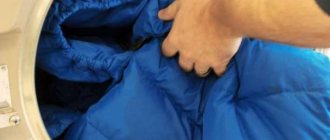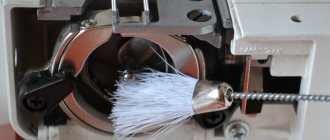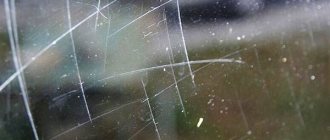Examination of the animal's ears
This procedure should be performed from an early age, which will allow the pet to get used to it and will not cause a negative reaction in him. When examining, pay attention to the presence of the following factors:
- sulfur and pollution;
- bloody spots;
- unpleasant odor;
- tumor formations;
- hyperemia and inflammation;
- scratches and scratches.
In order to properly carry out the examination, you need to carefully bend the ear, slightly turning it inside out. The inside must be clean. The passage is pale pink. If there is a large accumulation of sulfur, the passage should be cleaned. But, if in addition to it, you saw something else, contact your veterinarian to be on the safe side.
Before performing the manipulation, it is advisable to play with your pet so that he does not perceive it as something bad, after which you can give him a treat.
Removing earwax with a cotton swab
Why does dirt appear in a cat's ears?
The auricle has a complex shape. Sulfur secretions, which are present normally, perform a protective function for the middle ear. But if they are present in excess quantities, they can become a favorable environment for the development of pathogenic microorganisms.
Dust particles, small hairs, dirt constantly get into the ears, and flakes of dying skin also accumulate. In response to this, a protective substance is produced - sulfur, which creates an obstacle to the penetration of contaminants.
Without proper care, wax plugs may form or inflammation may develop, which in special cases will lead to complete or partial hearing loss, as well as changes in the functioning of the vestibular apparatus. And hearing for them is the most important factor, because the sensitivity of a pet’s ear is several times higher than that of a human.
Required accessories
How to clean a cat's ears?
Before cleaning your cat’s ears, you should inspect them, and if the ears are absolutely clean, then you don’t need to do anything. It is enough to carry out a similar procedure once every 3 weeks solely for preventive purposes. Clean ears can be treated in a couple of minutes, but this time will be well spent. Thus, the owner saves his pet from the risk of getting earwax or getting otitis media, which leads to hearing impairment.
If you don't clean your cat's ears, he may develop earwax.
It should be noted that the more domestic the cat is, the more serious care it will require. If ordinary cats do not require special care, then purebred cats may have problems. In this case, it is necessary to clarify how to clean the ears of an exotic breed cat. For example, sphinxes, due to their external and internal characteristics, require very careful attention to their ears. They can collect a lot of dirt and natural secretions in these places, which need to be cleaned out in a timely manner.
Before you clean your cat's ears at home, you need to prepare the necessary equipment. This will need to be done in advance so that when the animal is ready for the procedure, you do not have to run around the house looking for the necessary things.
It will take about 3 cotton swabs for one cat ear, that is, you need twice as many. You should not use homemade options, for example, wrapping cotton wool around a match, as such tools can be dangerous for delicate ears. If you scratch the inside of a cat's ear, it will cause inflammation and subsequent complications.
It will take about 3 cotton swabs for one cat ear.
Before cleaning your cat’s ears, it is advisable to purchase a special ear cleaning gel; it is inexpensive, but it is a very useful thing that can prevent the development of a lot of unpleasant situations. As for what you can use to clean your cat's ears, some breeders use plain water or vegetable oil. However, these are far from the best options, since they are not able to properly clean the ear, and you have to rub the delicate skin.
Best articles: TOP 10 largest reservoirs in Russia: names, photos, characteristics and maps
The question of how to clean a cat’s ears is very important and responsible.
It is important to hold the cat tightly and fix its head so that the animal does not accidentally jerk and the stick does not pierce an important organ. It is advisable to call for help for backup from another family member whom the cat trusts.
When cleaning the ears, do not squeeze the gel directly into the ear. It needs to be applied to a cotton swab and then wiped over a certain area. There is no need to insert the tool deeply. Such deep cleaning will be unnecessary, and the risk of damaging the eardrum increases significantly. The cotton swab should not go deeper than 1 cm.
When cleaning your ears, do not insert the wand too deeply
Cats' ears are designed in such a way that it is quite difficult to reach the eardrum.
However, careless sudden movement of a cat or its owner can lead to dire consequences. Therefore, you should play it safe and not insert the stick too deeply
It is very important to monitor the movements of the tool. If the ear is very dirty, it is necessary to clearly move from the inside to the outside
This will allow you to clean out dirt efficiently instead of pushing it further down the ear canal.
Only high-quality and precise actions will allow you to properly clean your cat’s ears. If the owner acts confidently, this state will be transmitted to the cat, so he will be calm.
Mites in the ears cause increased production of wax
Step-by-step instruction
If your pet strongly resists, categorically refuses to undergo cleaning, breaking free from your hands, then it is better to secure it with a towel.
Stages of implementation:
- Warm the lotion in your hands before starting so that the cold drops do not cause discomfort.
- Shake the bottle vigorously for 10-15 seconds.
- Open the bottle and drop 2-3 drops of the product into the passage, tilting the animal's head to the side.
- Using circular movements, massage the base of the ear to distribute the liquid over the entire surface.
- Release your head so Fluffy can shake it. This will allow the dirt to come off better.
- Soak a cotton pad or swab in lotion and wipe the inside surface with it, paying attention to each fold.
- If the ear is completely cleared, then proceed to the second one.
Of course, it is better to entrust the entire process to a veterinarian, but this is not always possible. If there is a lot of dirt, then home cleaning will not be enough.
Cleaning with a cotton pad
How often and with what to clean
The frequency of manipulation depends on the breed, health and other nuances. For example, for sphinxes, treatment should be performed once every 5-6 days.
For other breeds the interval is from 7 to 30 days. In addition, if the animal is an exhibition animal, then the treatment is carried out before each exhibition.
To carry out, you should prepare the following items:
- towel for fixation;
- a special cleaning product that can be bought at a veterinary clinic or a chlorhexidine solution. It is strictly forbidden to use alcohol-based solutions or soap solution;
- cotton pads or swabs for newborns, or clean dry wipes;
- You can use a flashlight.
Structure of a cat's ear
Cleaning ears at the veterinary clinic
The list of services provided by veterinary clinics includes a hygienic procedure - ear cleaning.
Veterinarians believe that it is necessary to carry out a professional examination of the animal at least once every two weeks, so that if any disease is detected in it, they can provide the animal with timely qualified assistance and prevent complications.
How much does it cost to clean a cat's ears at the vet? clinic, depends on the neglect of the case and on the pricing policy of the institutions themselves.
A loving, good owner takes care of his pet, regularly monitors its health and, if necessary, will always seek qualified help from a veterinary clinic.
What not to do
It is necessary to perform manipulation only on the visible part; attempts to penetrate deeper will only do harm.
There is no need to use folk remedies or self-prepared solutions that can dry out the epidermis and cause allergies.
Some breeders perform it to perfect purity. This is far from correct. Earwax should be present in moderation.
Also, do not use self-made devices. Is it dangerous. Leads to injury and infection.
When to contact a veterinarian
If during examination you find pus, crusts, or bumps, then you need to see a veterinarian, as this indicates the development of a specific disease.
In addition, you need to visit a veterinarian if you regularly do preventive cleaning, but do not observe the desired effect. Sulfur, impurities constantly accumulate, an unpleasant odor has appeared, during the procedure there are purulent traces on the cotton pad, or the cat is restless, shaking its head, or itching. These symptoms are a sign of a serious illness.
Ear cleaning at the vet
If your cat has ear mites or otitis media
If significant dark discharge is visible in the depths of the auricle, it is possible that the cat is sick with bacterial or fungal otitis or is infected with ear mites.
Ear mites are a parasite that lives inside your pet's ear canal. Unfortunately, its size is so small that it cannot be seen with the naked eye, but the products of its vital activity are clearly visible - dark flakes. If the cat is diagnosed, then ear cleaning should be done more often than usual, and an additional point is introduced into the process itself - after the end of the usual procedure, a medicine is instilled. Don’t get carried away - once every 4-5 days will be enough , otherwise irritation of the skin epithelium is likely.
For otitis media, cleaning at home is strictly prohibited. You shouldn’t skimp on your pet’s health—carry out cleaning only in a veterinary clinic.
The most common ear problems
In general, the presence of abundant secretion of glands may indicate the development of pathology, which will subsequently develop into a disease.
Hematoma
If the animal shakes intensely or scratches its ears, a blood vessel may rupture and a bruise may form.
Causes: trauma, forceful shaking of the head, regular calculations due to infestation by ticks, fleas, allergic reaction or middle ear infection.
Such hematomas require immediate specialist intervention.
Otodectosis
The main manifestation of tick-borne infection is behavioral changes: intense shaking of the head, scratching of the ears. Also considered symptoms of the disease are:
- reddish or brownish discharge;
- bleeding;
- on the inner surface you can see a crumbly substance that resembles ground coffee;
- scratches;
- smell;
- twitching;
- otitis externa
Otitis externa
This is an inflammation of the external auditory canal, often caused by an infectious etiology.
Signs:
- head shaking;
- scratching in the upper head part;
- discharge and unpleasant odor;
- hyperemia;
- swelling;
- behavior change;
- soreness.
Solar dermatitis
As a rule, albinos, breeds with white ears and noses, and sphinxes are affected. The reason is the lack of melanin and protective hair in certain areas of the body. The ears, eyelids, and nose are most often affected. The first manifestation is considered to be moderate hyperemia and hair loss. Next comes thickening of the skin and itching, causing multiple scratching and bleeding. If left untreated, it develops into squamous cell carcinoma.
Sulfur plugs
Brown plaque is not always a symptom of a disease. This may indicate a sulfur plug that has formed due to insufficient care. By themselves, they do not cause discomfort, but, as a rule, lead to an inflammatory process.
They are treated with a special solution that dissolves them. After the plug comes off, the area is treated with Chlorhexidine.
To sum it up, we can say that a cat's ears are not only for hearing, but also for balance. That is why they require special attention. Knowing how to properly clean your cat's ears can prevent the development of serious diseases, including hearing loss. By following the recommended instructions, you will be able to properly carry out hygienic care.
Video from a breeder of the Burmese breed How to properly clean a cat’s ears at home
Does a cat need ear cleaning?
Indoor cats do not need regular ear cleanings like dogs. And ear diseases are relatively less common among them than other animal species.
Under normal conditions, sulfur is secreted in small quantities. If you frequently clean your cat's ears, the secretion begins to be produced more strongly. And this leads to ear plugs and other problems. To maintain a healthy ear, it is enough to periodically clean the inside of the auricle and the beginning of the ear canal.
Exceptions are cats with a small amount of fur (hairless). In such animals, contamination occurs more quickly, so they need regular cleaning. The sparse hairs inside the ear cannot provide protection from dust and dirt, and the body compensates for this by increasing the production of wax.
This feature is typical for the following breeds:
- kohana;
- elf;
- sphinx;
- Peterbald;
- lefty
Rex, Maine Coon, Savannah, Somali, Oriental and Abyssinian cats have large ears, in which dust also quickly accumulates. It is recommended to clean it about once a week. However, due to individual characteristics, some representatives of these breeds may have ears that remain clean for a long time.
Excessive accumulation of sulfur leads to the proliferation of bacteria and fungi. The cat's immunity weakens, it loses the ability to resist parasitic diseases, and is often affected by ear mites.
Fold-eared cats cannot wash their ears on their own due to the structure of the auricle. Therefore, the owner must process them approximately once every 2 weeks. It is also not advisable to clean the ears of fold-eared cats excessively often. After all, without natural secretion, they are more likely to develop various diseases.
If your pet has too much wax and dirt in his ears, and they accumulate quickly after cleaning, you should take the animal to the veterinarian.
Perhaps the cat has some kind of disease. The specialist will prescribe appropriate medications. In this case, cleansing the auricle is only a concomitant procedure. And treatment is aimed at eliminating the cause.











